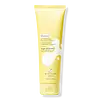What's inside
What's inside
 Key Ingredients
Key Ingredients

 Benefits
Benefits

 Concerns
Concerns

No concerns
 Ingredients Side-by-side
Ingredients Side-by-side

Water
Skin ConditioningDisodium Cocoyl Glutamate
CleansingNiacinamide
SmoothingGlycerin
HumectantDisodium Cocoamphodiacetate
CleansingDecyl Glucoside
CleansingXanthan Gum
EmulsifyingSodium Hyaluronate
HumectantMyrciaria Dubia Fruit Extract
Skin ConditioningSodium Ascorbyl Phosphate
AntioxidantPhenoxyethanol
PreservativeCitric Acid
BufferingEthylhexylglycerin
Skin ConditioningPotassium Sorbate
PreservativeTocopherol
AntioxidantWater
Skin ConditioningCocamidopropyl Hydroxysultaine
CleansingSuccinic Acid
BufferingXanthan Gum
EmulsifyingAlpha-Glucan Oligosaccharide
CleansingEpimedium Sagittatum Leaf/Stem Extract
AntioxidantHydrolyzed Oat Protein
Skin ConditioningCocos Nucifera Fruit Powder
Skin ConditioningLactic Acid
BufferingGlycerin
HumectantInulin
Skin ConditioningSodium Citrate
BufferingDecyl Glucoside
CleansingPropanediol
SolventPotassium Sorbate
PreservativeSodium Levulinate
Skin ConditioningCitrus Aurantium Dulcis Peel Oil
MaskingSodium Gluconate
Skin ConditioningTitanium Dioxide
Cosmetic ColorantMaltodextrin
AbsorbentSodium Starch Octenylsuccinate
AbsorbentLeuconostoc/Radish Root Ferment Filtrate
AntimicrobialCharcoal Powder
AbrasiveSaccharomyces Ferment Lysate Filtrate
Skin ConditioningCyclodextrin
AbsorbentCitric Acid
BufferingSodium Benzoate
MaskingPolyglyceryl-8 C12-20 Acid Ester
EmulsifyingWater, Cocamidopropyl Hydroxysultaine, Succinic Acid, Xanthan Gum, Alpha-Glucan Oligosaccharide, Epimedium Sagittatum Leaf/Stem Extract, Hydrolyzed Oat Protein, Cocos Nucifera Fruit Powder, Lactic Acid, Glycerin, Inulin, Sodium Citrate, Decyl Glucoside, Propanediol, Potassium Sorbate, Sodium Levulinate, Citrus Aurantium Dulcis Peel Oil, Sodium Gluconate, Titanium Dioxide, Maltodextrin, Sodium Starch Octenylsuccinate, Leuconostoc/Radish Root Ferment Filtrate, Charcoal Powder, Saccharomyces Ferment Lysate Filtrate, Cyclodextrin, Citric Acid, Sodium Benzoate, Polyglyceryl-8 C12-20 Acid Ester
 Reviews
Reviews

Ingredients Explained
These ingredients are found in both products.
Ingredients higher up in an ingredient list are typically present in a larger amount.
Citric Acid is an alpha hydroxy acid (AHA) naturally found in citrus fruits like oranges, lemons, and limes.
Like other AHAs, citric acid can exfoliate skin by breaking down the bonds that hold dead skin cells together. This helps reveal smoother and brighter skin underneath.
However, this exfoliating effect only happens at high concentrations (20%) which can be hard to find in cosmetic products.
Due to this, citric acid is usually included in small amounts as a pH adjuster. This helps keep products slightly more acidic and compatible with skin's natural pH.
In skincare formulas, citric acid can:
While it can provide some skin benefits, research shows lactic acid and glycolic acid are generally more effective and less irritating exfoliants.
Most citric acid used in skincare today is made by fermenting sugars (usually from molasses). This synthetic version is identical to the natural citrus form but easier to stabilize and use in formulations.
Read more about some other popular AHA's here:
Learn more about Citric AcidDecyl Glucoside is a glucose-based surfactant and emulsion stabilizer. It is created by reacting glucose with the fatty acids from plants.
Surfactants help clean the skin by trapping oil, sebum, and dirt to be washed away. As an emulsion stabilizer, it stabilizes the ingredients in a product by preventing them from separating.
This ingredient is biodegradable and non-toxic. This ingredient is commonly found in baby shampoos.
Decyl Glucoside is sometimes used to stabilize the UV filter Tinosorb.
Learn more about Decyl GlucosideGlycerin is already naturally found in your skin. It helps moisturize and protect your skin.
A study from 2016 found glycerin to be more effective as a humectant than AHAs and hyaluronic acid.
As a humectant, it helps the skin stay hydrated by pulling moisture to your skin. The low molecular weight of glycerin allows it to pull moisture into the deeper layers of your skin.
Hydrated skin improves your skin barrier; Your skin barrier helps protect against irritants and bacteria.
Glycerin has also been found to have antimicrobial and antiviral properties. Due to these properties, glycerin is often used in wound and burn treatments.
In cosmetics, glycerin is usually derived from plants such as soybean or palm. However, it can also be sourced from animals, such as tallow or animal fat.
This ingredient is organic, colorless, odorless, and non-toxic.
Glycerin is the name for this ingredient in American English. British English uses Glycerol/Glycerine.
Learn more about GlycerinPotassium Sorbate is a preservative used to prevent yeast and mold in products. It is commonly found in both cosmetic and food products.
This ingredient comes from potassium salt derived from sorbic acid. Sorbic acid is a natural antibiotic and effective against fungus.
Both potassium sorbate and sorbic acid can be found in baked goods, cheeses, dried meats, dried fruit, ice cream, pickles, wine, yogurt, and more.
You'll often find this ingredient used with other preservatives.
Learn more about Potassium SorbateWater. It's the most common cosmetic ingredient of all. You'll usually see it at the top of ingredient lists, meaning that it makes up the largest part of the product.
So why is it so popular? Water most often acts as a solvent - this means that it helps dissolve other ingredients into the formulation.
You'll also recognize water as that liquid we all need to stay alive. If you see this, drink a glass of water. Stay hydrated!
Learn more about WaterXanthan gum is used as a stabilizer and thickener within cosmetic products. It helps give products a sticky, thick feeling - preventing them from being too runny.
On the technical side of things, xanthan gum is a polysaccharide - a combination consisting of multiple sugar molecules bonded together.
Xanthan gum is a pretty common and great ingredient. It is a natural, non-toxic, non-irritating ingredient that is also commonly used in food products.
Learn more about Xanthan Gum